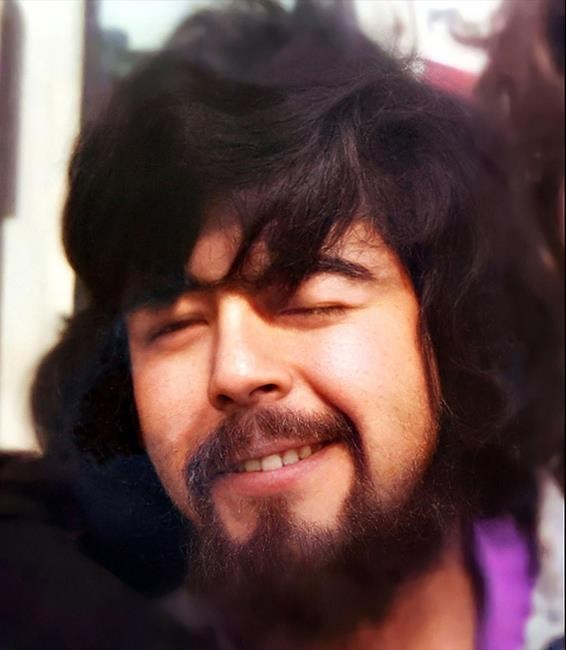EDMONTON — The 44-year mystery around the identity of a man whose scorched body was found in a septic tank has been solved with a forensic technique used to find the Golden State Killer in the United States, Alberta RCMP say.
In April 1977, the remains were found on a farm near Tofield, Alta., about 70 kilometres east of Edmonton. At the time, police said he had been tortured and sexually assaulted before his death.
RCMP identified the victim Wednesday as Gordon Edwin Sanderson, an Indigenous man in his mid-20s from Manitoba. He had been living in Edmonton around the time of his death.
“He was known as Gordie to his family and friends,” Sgt. Jason Zazulak said at a news conference.
“Gordie had a hard life. He was separated from his family at nine years old during the ‘60s Scoop and placed in foster care.”
The ‘60s Scoop, which took place between the 1960s and 1980s, was a child welfare practice in Canada where thousands of Indigenous children were removed from their families and placed in care.
“He struggled with addictions and had various run-ins with the police,” Zazulak added.
RCMP sent biological samples last year to Othram Labs in Texas to develop a DNA profile that could be searched against public DNA databanks in Canada and the U.S. that track ancestry.
As a result, they were able to develop a family tree with several possible relatives — one of whom turned out to be Sanderson’s sister, Joyce Sanderson, who had lost track of her brother, Zazulak said.
“(Sanderson) was last heard of by family when he was going to meet his younger brother, Arthur, in Calgary,” he said. “Sadly, Gordie did not make it to that meeting.”
Zazulak added that Sanderson also has a daughter.
Sanderson’s sister reported him missing in the early 1980s, “but never heard back about him,” Zazulak said.
He said police identified Sanderson in January and the case became an active homicide investigation.
“We believe that Gordie Sanderson was killed by associates of his involved in various criminal acts in the Edmonton area,” Zazulak said.
“We would like to speak with anyone who knew Gordie Sanderson and may have information about his death.”
But he acknowledged that Sanderson’s killer may no longer be alive.
“Between the passage of time and just some of the lifestyles that people were involved in at the time as well, it’s very possible that they have passed away.”
The infamous cold case made headlines throughout the decades as investigators tried to gather leads.
At one point, the Alberta Medical Examiner’s office made a three-dimensional reconstruction of the victim’s face in the hope of identifying him.
Zazulak said RCMP will be using the same genetic genealogy techniques in other cold cases.
“It is a very important technique, but it’s not something that can be used in every case,” he said.
“It does have a fairly narrow applicability. But where it is applicable, it is very powerful.”
Genetic genealogy as a police tool wasn’t broadly known until 2018 when Golden State Killer suspect Joseph DeAngelo was arrested in Northern California.
It was alleged that DeAngelo, a former police officer, was responsible for about a dozen murders and about 50 rapes in the 1970s and ’80s. Last June, he pleaded guilty to 13 counts of murder and dozens of rapes that were too old to prosecute.
Since then, law enforcement agencies and amateur genealogists have touted the benefits of people transferring their DNA profiles compiled by commercial genealogy sites onto smaller, public open-source databases to help solve crimes.
Commercial sites, such as Ancestory.com and 23andMe, require police to obtain search warrants for information, while public sites do not.
More recently in Canada, genetic genealogy was used by Toronto police to identify a suspect in the killing of nine-year-old Christine Jessop in 1984.
In October, police said DNA evidence indicated Calvin Hoover, then 28, had sexually assaulted Jessop and he would have been charged with her murder if he were alive.
This report by The Canadian Press was first published June 30, 2021.
— With files from The Associated Press
Daniela Germano, The Canadian Press



